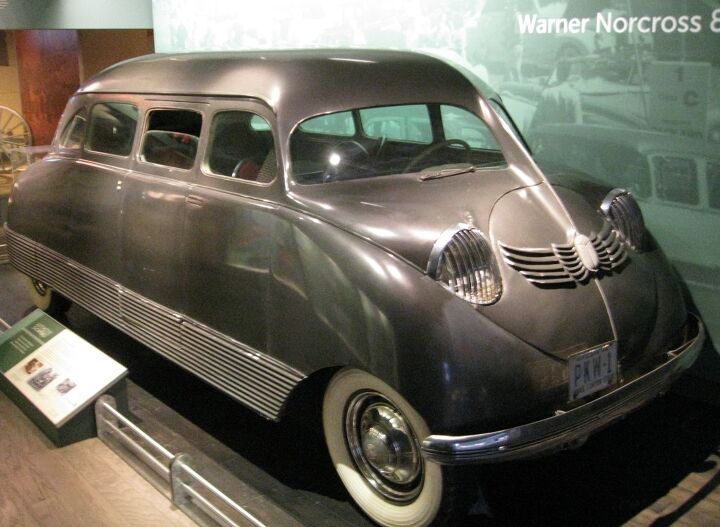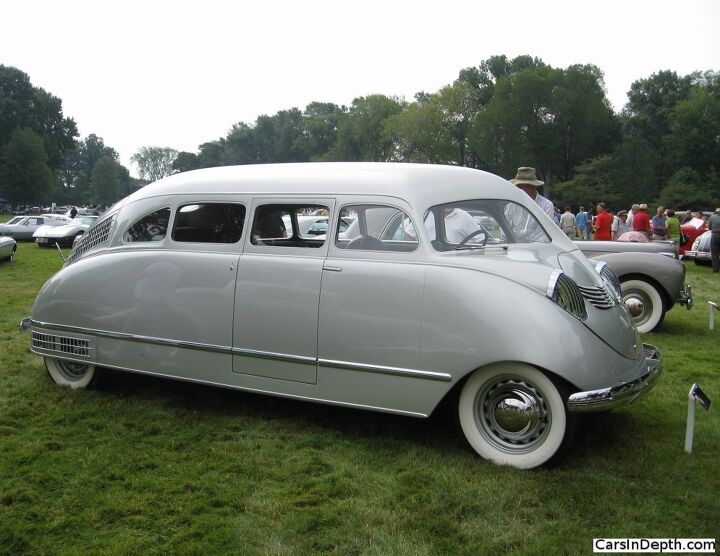#WilliamStout
Stout Scarab Returns to Detroit Historical Museum
During the city of Detroit’s recent municipal bankruptcy, the billion-dollar-plus-valued art collection of the city-owned Detroit Institute of Arts became an issue due of the possibility the art might have to be sold off to pay the city’s debts. Less generally well known, but probably of greater interest to car enthusiasts, is another collection ultimately owned by the city — the six dozen or so vehicles that are owned by the Detroit Historical Museum. One reason why that collection isn’t better known is that most of its more famous cars are usually on loan, displayed at other museums.
The Stout Scarab – An Art Deco Automotive Artifact That Was Ahead of Its Time
In looking at Henry Ford’s forays into the airplane and aviation industries we’ve touched on the story of William Bushnell Stout. Stout was the man behind Ford’s successful endeavor into aviation with the Ford Trimotor. Car enthusiasts, though, might be more familiar with the small run of Stout Scarab automobiles, said to be the “first minivans”. Stout introduced a few other other automotive firsts like air suspension and the use of composite bodies. How much of an innovator Stout was, as opposed to someone who saw value in the ideas of others and brought them to fruition, is open to debate. He was certainly respected by the engineering community, serving as president of the Society of Automotive Engineers. It’s undeniable, though, that Stout saw the promise, later fulfilled, of commercial passenger aviation, and while many of the Scarabs’ more prominent features can be called dead-ends, quite a few of the things that Stout built into his cars are probably present on the car or truck you drive.
Henry Ford's Flying Flivver: The Model T of the Air
Following the success of the Ford Trimotor, one of the first successful commercial passenger and cargo airplanes, which was introduced in 1925, Henry Ford got the aviation bug and decided to build what he called a “Model T of the air”, a small, affordable single seat airplane. He first proposed the idea to the men running his aircraft division, Trimotor designer William Bushnell Stout and William Benson Mayo but based on Henry’s design brief, neither experienced aeronautical man wanted anything to do with project. By then Henry Ford had bought out all of his investors and partners. All of Ford Motor Company stock was owned by Henry, Clara, and Edsel Ford, with Henry having the greatest share (49/3/48) so the firm was effectively Henry’s private feudal empire. Mr. Ford simply moved the project to a building in the Ford Laboratories complex.
Honda's Not the First Car Company to Make an Airplane: The Ford TriMotor
Since this isn’t The Truth About Airplanes or even Planelopnik, we don’t generally cover aviation here at TTAC, either general or commercial (sorry about that pun). However, Honda announced that last week the first production HondaJet took its maiden test flight, near Honda Aircraft’s Greensboro, NC headquarters, and Honda does, after all, make and sell a few cars too. They aren’t the first car company, though, to get into the airplane business. As a matter of fact an earlier automaker had a seminal role in the development of commercial passenger aviation and even took a flier (sorry again, couldn’t resist) at general aviation, though that experiment was less successful. I don’t know if Soichiro Honda’s ever envisioned his motor company making jet airplanes, but since one of Soichiro’s role models, Henry Ford, helped get passenger aviation off the ground (okay, the last time, I promise) it’s not out of the realm of possibility that the thought may have crossed Mr. Honda’s mind.



















Recent Comments